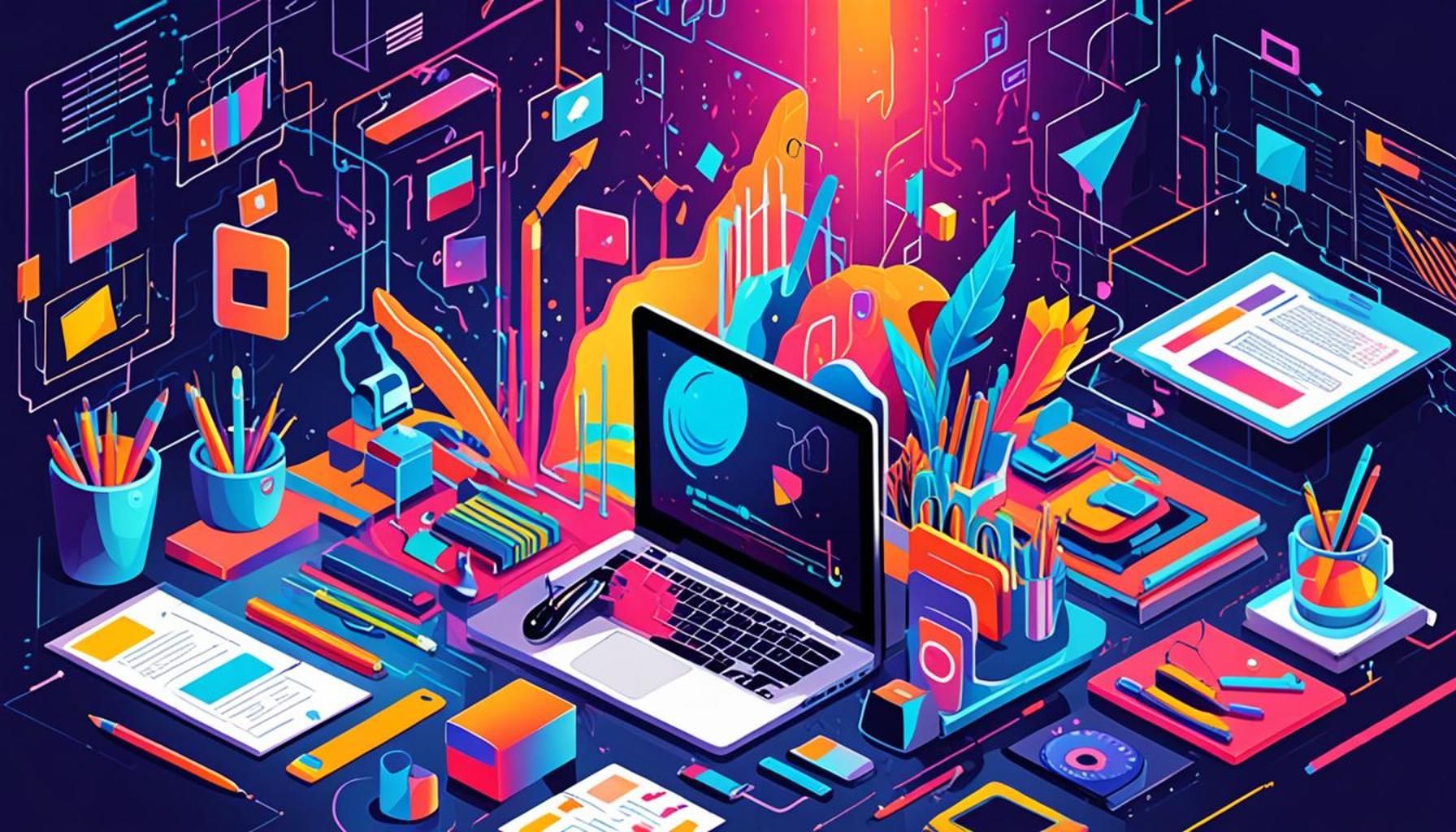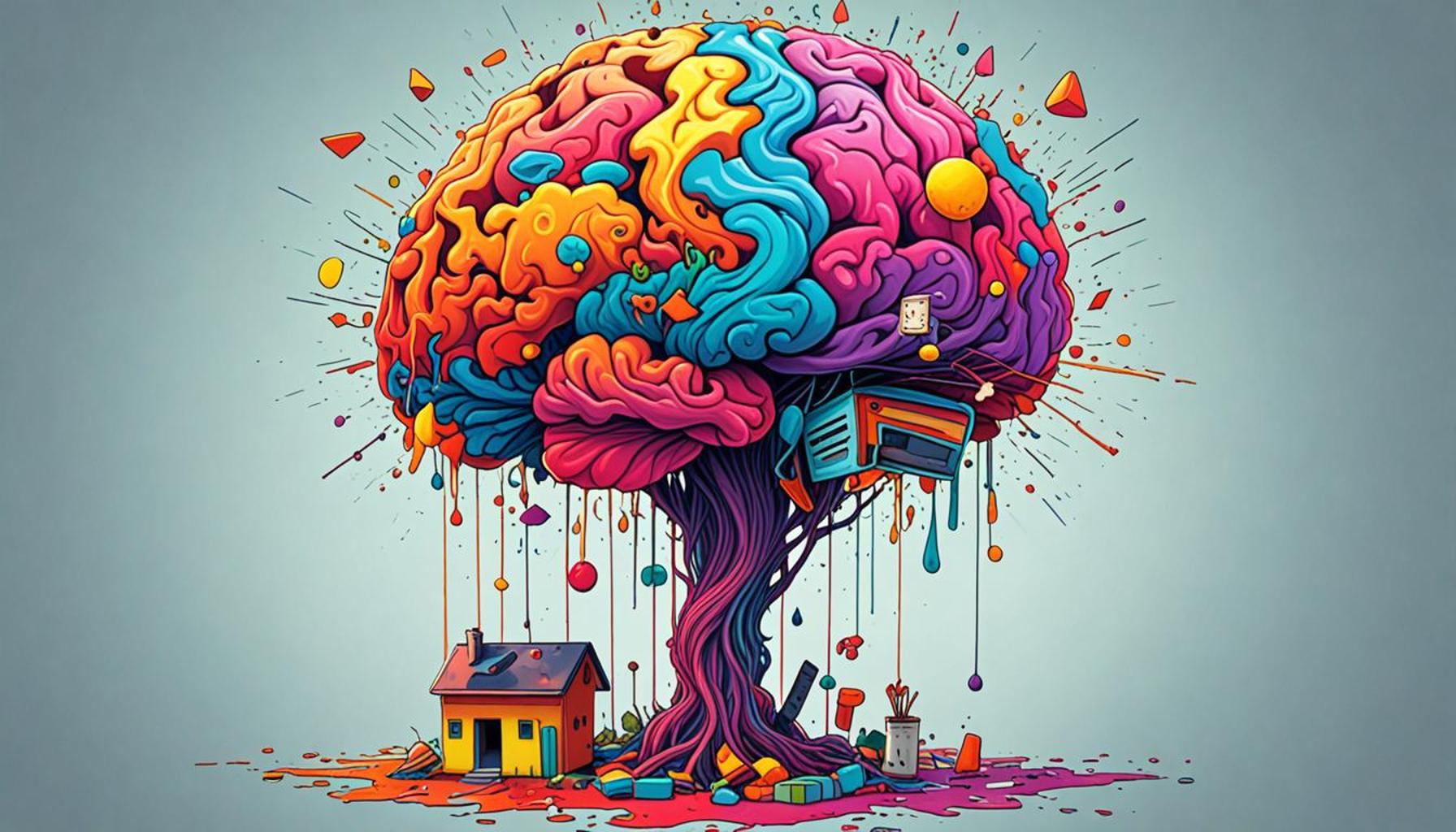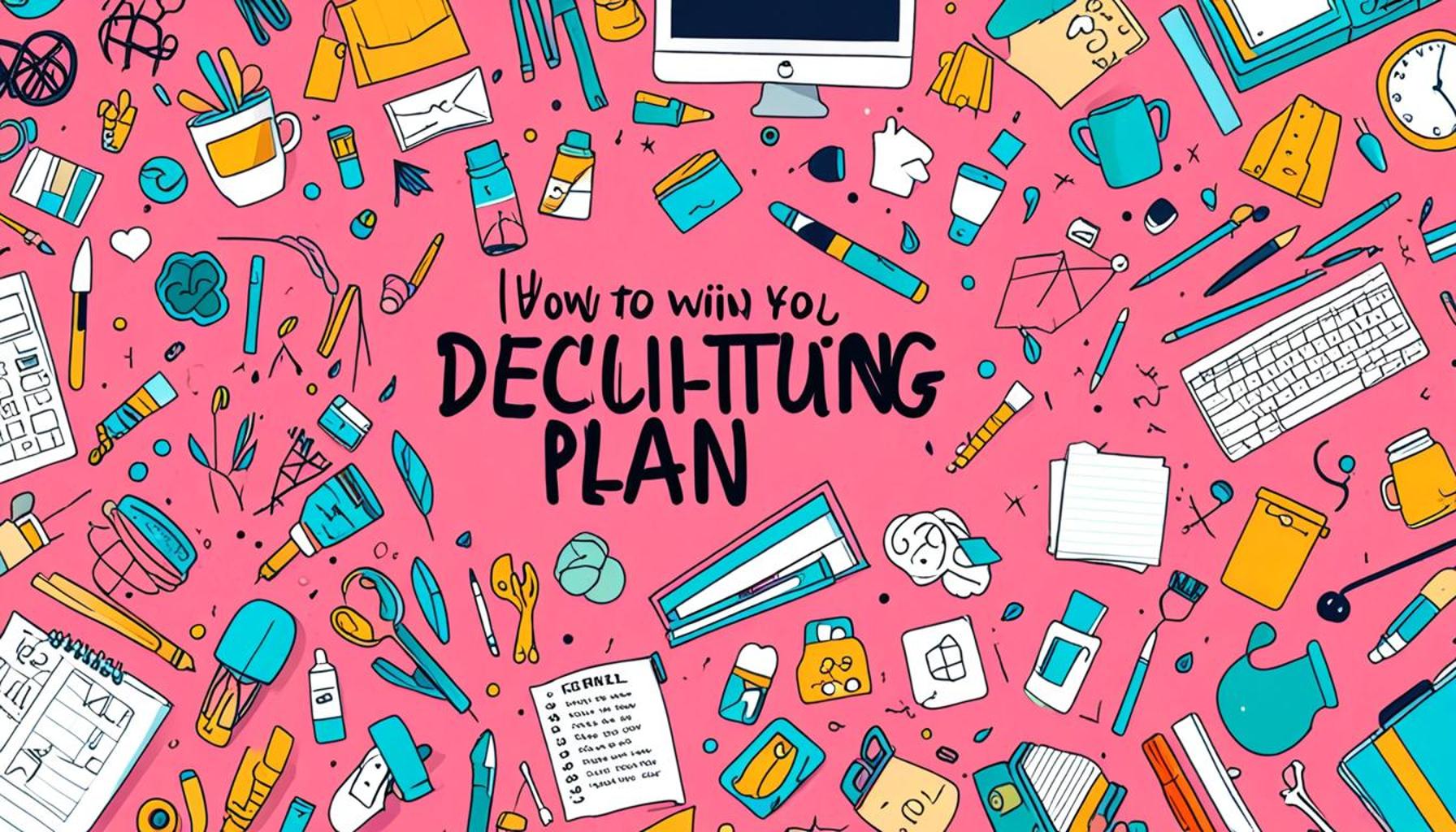Digital Detachment: Strategies to Organize Your Virtual Space and Increase Productivity

Introduction
In our digitally driven world, the lines between work and personal life have blurred. The vast expanse of virtual spaces can lead to chaos, distraction, and decreased productivity. However, with the right strategies, you can effectively manage your online environment. With the advent of remote work, especially in the wake of the COVID-19 pandemic, many individuals have found themselves juggling various responsibilities from the comfort of their own homes. This often results in an increase in digital clutter that is both overwhelming and counterproductive.
Consider this: how much time do you spend sifting through cluttered emails or disorganized files? Research indicates that an average worker can waste up to two hours a day on unproductive digital activities. This staggering figure highlights the necessity for a productive workspace that inspires focus rather than frustration. Prioritizing the management of your digital footprint can be transformative, enhancing both your personal and professional efficacy.
To help navigate the complexities of the digital age, here are a few effective strategies to reshape your virtual landscape:
- Declutter Your Digital Space: Start by organizing files and emails to minimize distractions. Set aside time each week to review your inbox and delete unnecessary messages. Implementing a folder system can also categorize important correspondence, making it easier to find what you need when you need it.
- Implement Time Blocks: Dedicating specific periods for focused work and breaks can revolutionize your productivity. The Pomodoro Technique, for example, encourages users to work for 25 minutes, followed by a 5-minute break. This method not only provides a structured approach to tasks but also helps maintain high levels of concentration throughout the day.
- Utilize Productivity Tools: Leverage applications that streamline your tasks and improve workflow. Tools like Trello for project management, Slack for team communication, or Todoist for task tracking can greatly enhance your efficiency. These resources allow for better collaboration and keep everyone aligned while reducing the time spent on unnecessary emails or meetings.
Embracing these methods can lead to enhanced focus and greater accomplishments in your daily tasks. By consciously choosing to disconnect from distractions and prioritize your digital space, you lay the groundwork for a more organized and effective work life. As you delve deeper into digital detachment, you’ll discover how to create a workspace that fosters creativity and efficiency, leading to greater satisfaction and success in achieving your goals. The journey towards an organized digital life not only enhances productivity but also contributes to reduced stress, empowering you to thrive in both professional and personal arenas.
DISCOVER MORE: Click here to learn about the psychological benefits of conscious consumption
Declutter Your Digital Space: The Foundation of Productivity
The first step towards achieving a more organized and productive virtual space is to declutter your digital environment. In the same way that a messy desk can hinder your focus, a chaotic online landscape can lead to wasted time and increased frustration. Begin by taking a close look at your email inbox, cloud storage, and computer files. Over time, these spaces can accumulate unnecessary documents and outdated messages, creating a digital backlog that stifles productivity.
To tackle this challenge, it is essential to adopt a systematic approach. Start with your email inbox: set aside a dedicated time each week to sift through your messages. Implement the Four D’s method—Do, Delegate, Defer, or Delete. If a message can be answered quickly, respond to it immediately. If it requires input from others, delegate it. If it can wait, defer your response. And for messages that hold no value, don’t hesitate to delete them. This method not only reduces clutter but also empowers you to maintain control over your communication channels.
As for your files, consider grouping them into specific folders based on projects or categories. An organized folder system enhances retrieval speed, ensuring that you spend less time searching and more time getting work done. Think of it as a virtual filing cabinet: each document has its designated spot, making your workflow smoother and more efficient.
Establishing Clear Digital Boundaries
The concept of digital detachment extends beyond mere organization; it also involves establishing clear boundaries to separate your work-life from personal activities. With so many apps vying for your attention, it can be too easy to slip into an endless cycle of notifications and distractions. Create designated times for checking emails or engaging with social media. By practicing restraint, you can preserve your focus for tasks that genuinely require your attention.
Moreover, think about employing digital wellbeing tools that track your online activities. Applications such as RescueTime or Forest can help you monitor how much time you spend on various websites or apps, providing insights into your digital habits. This data empowers you to make informed decisions about how you allocate your time, ultimately reshaping how you interact with your virtual spaces.
- Use Organization Techniques: Implement a consistent naming convention for your files, such as including dates for easier sorting.
- Regularly Review Your Space: Set a monthly schedule to assess the health of your digital environment, decluttering as necessary.
- Limit Unnecessary Applications: Uninstall apps that contribute to your digital chaos and distract from your productivity.
By embracing these strategies, the journey towards a more focused and productive digital space becomes attainable. Each step taken in the decluttering process not only enhances your immediate performance but also cultivates an environment where creativity and efficiency can thrive. Remember, the goal is not just organization but liberation from the chaos that digital clutter creates.
Understanding Digital Detachment in the Modern Workspace
In a world where screens dominate our lives, the concept of digital detachment emerges as a compelling strategy for anyone looking to optimize their productivity. This innovative approach emphasizes the importance of intentionally disconnecting from digital distractions to improve focus and enhance overall well-being. By systematically organizing your virtual space, you can create an environment that not only minimizes distractions but also maximizes your efficiency.One practical method to achieve this is through the assessment and decluttering of your digital files and applications. This involves evaluating what tools and data are essential versus what is merely cluttering your virtual workspace. Removing outdated files, unsubscribing from irrelevant newsletters, and limiting active applications are critical steps toward achieving a streamlined digital environment.Moreover, embracing tools like task management software can bolster your ability to keep your virtual space organized. These tools help prioritize tasks, set deadlines, and provide visual insights into your productivity patterns. By utilizing such technology effectively, you can discern what strategies work best and adapt your routines accordingly. The goal of digital detachment is not to eliminate technology from your life but to establish a harmonious relationship with it. When you take the time to create a productive virtual space, you are not only improving your focus but also enhancing your creativity and problem-solving abilities. Thus, the journey towards digital detachment is less about disconnecting and more about how to best connect with the important aspects of your work without the overwhelming noise of unnecessary information.
| Category | Description |
|---|---|
| Focus Enhancement | Digital detachment increases your focus by minimizing distractions. |
| Workflow Optimization | Streamlined digital spaces lead to a more efficient workflow and less time wasted. |
Implementing these strategies allows workers to harness their full potential. Being mindful of your digital habits can transform your work life, enabling sharper focus and greater productivity in an increasingly digital landscape.
DON’T MISS: Click here to enhance your productivity
Implementing Effective Time Management Strategies
In addition to organizing your digital space, another critical aspect of achieving digital detachment lies in effective time management. With the overwhelming number of distractions available online, employing strategies that help manage your time can drastically enhance your productivity. One effective technique is the Pomodoro Technique, a time management method developed by Francesco Cirillo. This technique encourages you to work in focused sprints—typically 25 minutes—followed by short breaks, which can significantly improve concentration and reduce burnout.
After several Pomodoro cycles, take a longer break to recharge. This method not only helps in maintaining focus but also breaks down your workload into manageable intervals. As you adopt this approach, you will find that your productivity increases and your motivation is reignited with every completed task. Furthermore, using a digital timer or a dedicated app for this technique can assist in keeping track of your work intervals effectively.
Leveraging Task Management Tools
Integrating task management tools into your digital toolkit can streamline your projects and minimize the chaos of multiple unfinished tasks. Applications such as Trello, Asana, or Todoist allow you to create task lists, set deadlines, and prioritize workflows seamlessly. These tools not only help you visualize what needs to be accomplished but also offer collaborative features to work effectively with team members, making communication clearer and responsibilities explicit.
With these platforms, you can categorize tasks by urgency or project, allowing you to tackle the most critical assignments first. By maintaining a clear overview of your obligations, you can push aside distractions and focus on what truly matters—achieving your goals. Plus, many of these task management applications have mobile versions, enabling you to stay organized and productive, regardless of your location.
Creating a Distraction-Free Digital Environment
Another crucial element in the journey towards digital detachment is the construction of a distraction-free digital environment. One of the most effective strategies for minimizing distractions is to utilize browser extensions and applications that temporarily block access to social media sites and other time-wasting platforms. Tools like Cold Turkey and Freedom allow you to schedule periods during which specific websites are inaccessible, enabling you to focus wholly on essential tasks without temptation.
Additionally, decluttering your digital workspace involves more than just file organization—it also encompasses your browser tabs and bookmarks. The more tabs you have open, the higher the likelihood of distraction. Aim to limit the number of browser tabs open simultaneously and regularly curate your bookmarks to ensure only the most relevant sites are quickly accessible. Uncluttering your browser promotes a clearer mental space, allowing you to work more efficiently without constantly shifting your attention.
- Schedule Digital Detox Days: Regularly dedicate time away from screens to reset and recharge mentally.
- Designate a Morning Routine: Establishing a consistent morning routine free from digital distractions can set a productive tone for the day.
- Practice Mindfulness: Mindfulness techniques, including meditation or deep-breathing exercises, can refresh your mental state and improve focus.
The conscious efforts to devise an organized and efficient digital workspace can empower you to reclaim control over your tasks, boost productivity, and establish healthy boundaries in the digital landscape. Adopting these time management strategies, alongside tools for organization, will ensure not only that you manage your projects effectively but also that you cultivate a balanced relationship with your digital environment.
DISCOVER MORE: Click here for essential digital disposal strategies
Conclusion
In an age of constant connectivity and digital inundation, achieving digital detachment is essential for fostering both productivity and mental well-being. By implementing the strategies discussed, such as time management techniques like the Pomodoro Technique and utilizing task management tools for streamlined project oversight, you can create a structured environment that mitigates distractions and enhances focus.
Moreover, fostering a distraction-free digital environment is pivotal. By thoughtfully curating your browser tabs and utilizing site-blocking apps, you can maintain clarity and facilitate an uninterrupted workflow. Equally important are practices like scheduling digital detox days and committing to mindfulness techniques, which help reset your mental state and prepare you for a productive day.
As you embark on this journey of organizing your virtual space, remember that achieving digital detachment is not merely about cutting down on distractions; it’s about cultivating a healthy relationship with technology and your digital tools. By establishing a balance that encourages productivity while safeguarding your mental health, you will pave the way for greater efficiency and a more fulfilling work life. Dive deeper into these strategies, experiment, and find what resonates best with you, knowing that the path to a well-organized digital space and heightened productivity is within your reach.


